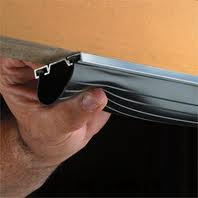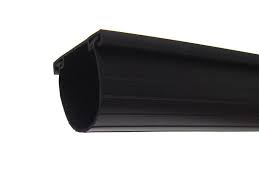We all know the importance of garage door weatherstripping seals. As their name implies, they are installed to weatherproof our garage door and by extension, our home. You see, garage doors are made in different sizes to fit all openings. But not all garage constructions are perfect. And even if the imperfections are minor or the garage door fits just fine, there might be some teeny-weeny gaps all around the door that will let air drafts seep in. That can increase dramatically your energy bills. You will be losing energy and will be attacked by the outside bad winter or even the summer heat wave. Not good.
And so, the role of garage door weather seals is simple. They allow you to control the indoor temperatures – thus, your bills. They also control interior moisture and keep insects, snakes, rodents and rainwater out. Since they close the little gaps created between the door and the frame, they allow the door to move better, close firmly.
With the advantages of weather seals already said and thus, the reasons for weatherstripping garage doors correctly established, there’s only one thing to see. Which weather seals to choose?
Things to consider before you get garage door weatherstripping seals

Although the garage door weather stripping installation is not rocket science, it requires precision. It also demands getting the right size or measuring and cutting the weather seals to perfectly match the door. If a screw protrudes, the garage door will not be able to move right. If the weather seals are not of the right size, some sections of the door will not be covered.
Most weather seals are 2” wide, but come in bigger sizes too. The size depends on the gap between the door and the floor or the door and the frame. That’s why the help of a professional garage door company will come handy.
Side and top garage door weather seals
They are usually known as garage door stop molding or weather seal molding or trim molding and are usually made of PVC. The PVC part is mount on the jamb. There’s also the option of getting a metal retainer, which is screwed to the jamb and a brush weather seal is inserted to close the gap with the door.
Another option is the reverse angle seal that is made of a hard rubber and essentially, creates a U seal with the door found inside it.
Bottom seal garage door weather strip choices
Bottom seals are also known as astragals and gaskets. Traditionally, they were made of rubber or vinyl and were adhered or nailed on the door.
Today, most garage doors utilize retainer weather seals. Found at the bottom of the door, they create a channel where the actual weather seal is inserted. The retainers are usually made of aluminum but can also found in PVC and steel.
There are single and double retainers. What this means is that the weather seal is attached to one or two points, respectively. Based on that, the bottom seals are of the following types.
- The most common type of bottom seals is the U-shaped ones whose ends form a T.
- A similar model is the J-type that is also inserted in the retainer forming two Js.
- Bulb weather seals are like tubes, which are wider at the bottom and narrower on the top. These types are as useful as their inflatable counterparts when the floor is uneven since they push the seal upwards, while spreading over the floor closing all gaps.
- Beaded seals are for double retainers and both of their sides bend upwards and fit in grooves.
- Brush seals look like brushes. They are very durable and also, flexible and effectively keep debris out but they are not as effective when it comes to water.
Threshold weather seals

There are soft and hard rubbers, brushers, U, T and L shapes, there are all kinds of weather seals. To find the right garage door weatherstripping replacement, make sure to talk with a pro. It’s important to consider the garage door brand, material, size and gap distance.







